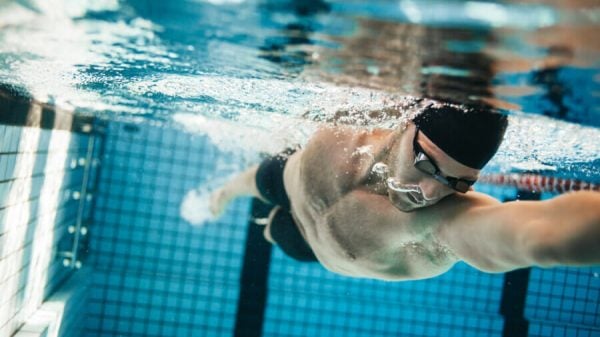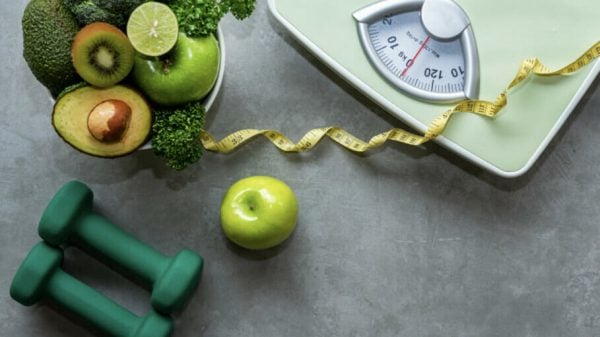If you’re exploring ways to re-engage in your fitness routine after childbirth, especially for a complex workout like Pilates, you’re not alone. The alterations in your physique during and post-pregnancy can make formerly simple activities seem unfamiliar and perplexing.
With a changing center of gravity and weakened core, your postpartum Pilates experience may differ significantly from your pre-pregnancy practice. Pilates is recognized for its capacity to realign the body and enhance strength, flexibility, and core stability, according to Melissa Bentivoglio, a renowned Pilates coach and creator of the at-home reformer FRAME. She stresses the significance of exercising caution postpartum and being aware of your body’s readiness for incorporating exercise while respecting its instincts.
Pilates is a frequently practiced exercise during pregnancy, with suitable adjustments, involving deliberate, controlled motions that engage the core and concentrate on breathing. Despite not being linked to strenuous perspiration, Pilates targets multiple muscle groups at once, necessitating thoughtful consideration before resuming it.
When Can You Resume Pilates?
The timing for returning to exercise after giving birth varies. For a straightforward vaginal birth, it’s advisable to wait a few days before gentle stretching, walking, and mild activities like kegels. Typically, doctors suggest waiting until the postpartum six-week check-up before reinitiating exercise. For individuals who underwent a cesarean section, it may take up to 12 weeks before receiving medical clearance for exercise, as the incision site needs time to heal.
Many factors and complications can impact the postpartum period, such as diastasis recti, a separation of abdominal muscles. Therefore, consulting with a healthcare provider regarding your unique situation and the type of exercise you intend to resume is crucial.
Key Points to Recall When Revisiting Pilates
Once your doctor gives you the go-ahead, here’s a manual for reintegrating Pilates into your routine:
- Adapt to Your Current Fitness Level: Commence at a tolerance level that suits you and gradually escalate the challenge. In Pilates, controlled movements are essential for optimizing muscle engagement.
- Proceed Gradually: Reengaging in Pilates postpartum requires patience. It’s important to acknowledge individual experiences, muscle memory, and recovery timelines.
- Emphasize the Mind-Body Connection: Pilates relies heavily on the mind-body connection, aiding in lifting mood and reinstating self-awareness. Intentional activation of particular muscles enhances exercise effectiveness.
- Reestablish Your Breathing Technique: Correct breathing is crucial in Pilates as it facilitates muscle activation without holding your breath.
- Adjust When Necessary: Adjustments can aid in achieving intensity and preventing strain while rebuilding strength. For instance, executing a plank with bent knees can keep the core engaged without risking abdominal separation.
What are the Ideal Early Postpartum Pilates Exercises?
Commence with gentle exercises like pelvic tilts, focusing on controlled motions, and modified side planks to activate the core stabilizers and inner muscles. These exercises can be included in at-home reformer classes or practiced without equipment.
“Position yourself on your back with knees bent and feet flat on the floor. Inhale to prepare, and exhale as you slide one heel forward along the floor, straightening the leg. Inhale to return to the starting position,” the instructor suggests. “Repeat with the other leg. Focus on engaging your core and maintaining pelvic stability.”
“Lie on your back with knees bent and feet flat on the floor hip-width apart. Inhale to prepare, and exhale as you lift your hips off the floor, creating a straight line from shoulders to knees,” the instructor elaborates. “Inhale to lower your hips back down. Focus on engaging your glutes and core, along with the inner thighs and pelvic floor.”
“Position yourself on the edge of a sturdy chair with your back straight and shoulders relaxed. Inhale to lift one leg off the floor, extending it straight in front of you,” she advises. “Exhale to lower the leg back down. Repeat with the other leg. Maintain good posture and engage your core.”
“Relax in a comfortable sitting or lying position. Tighten your pelvic floor muscles as if you’re halting the flow of urine,” she suggests. “Hold for a few seconds, then release. Repeat several times throughout the day to fortify the pelvic floor.”
“Lie on your side with your head supported by your arm and legs straight and stacked. Inhale to lift the top leg toward the ceiling. Exhale to lower the leg back down. Repeat on both sides to work on hip and outer thigh strength.”
“Adopt a low plank position on the forearms, place a glider or towel under each foot, and gently slide your right foot out to the right side as far as possible without altering the position of the rest of your body. Bring your legs back together and repeat on the left side. Exemplary exercise for integrating adductor muscles (outer thighs), glutes, and pelvic floor.”
“Recline on your back with your knees bent and feet flat on the floor. Curl your head, neck, and shoulders up to gaze at your thighs, extending your arms long at your sides hovering just above the mat. Begin to pump your arms up and down a few inches as you inhale for five counts and exhale for five counts until you reach 100. Keep the movement controlled, and alter as necessary for comfort.”
Which Pilates Exercises Should Be Avoided Postpartum?
Just as crucial as what you do, is what you shouldn’t do. Below, Bentivoglio shares movements to steer clear of when you’re getting back into the groove.
“Steer clear of exercises that exert excessive strain on the abdominal muscles, such as full sit-ups, double-leg lifts, and particularly placing strain on the lower abdomen, which can further exacerbate muscle separation,” she cautions. “These movements can strain the rectus abdominis and may not be suitable until later in the postpartum recovery.”
“Avoid twisting movements that impose considerable strain on the spine and abdominal muscles,” she advises. “This encompasses exercises like Russian twists or advanced spinal rotations.”
“Refrain from high-impact activities that entail jumping or abrupt, forceful movements,” she suggests. “Your joints, especially if you had a cesarean section, require time to recuperate, and high-impact activities can heighten the risk of injury.”
“Avoid exercises including unsupported back extensions, as these can strain the lower back,” she states. “Illustrations include full extension backbends or exercises where you raise your upper body off the ground without proper support.”
“Movements involving deep flexion of the spine, such as deep forward bends, should be approached cautiously,” she advises. “These can stress the abdominal muscles and may not be suitable during the early postpartum period.”
“Avoid heavy resistance training exercises that impose a significant load on the muscles,” she alerts. “It’s important to commence with lighter resistance and progressively advance as your strength and endurance enhance.”
“While gentle stretching is beneficial, abstain from excessive stretching or overextending your muscles,” she emphasizes. “Hormonal changes during pregnancy and breastfeeding can affect joint laxity, making it easier to overstretch and potentially induce injury. Relaxin, a hormone produced during pregnancy, can persist for up to six months postpartum and can cause destabilization in the pelvis and joints.”










